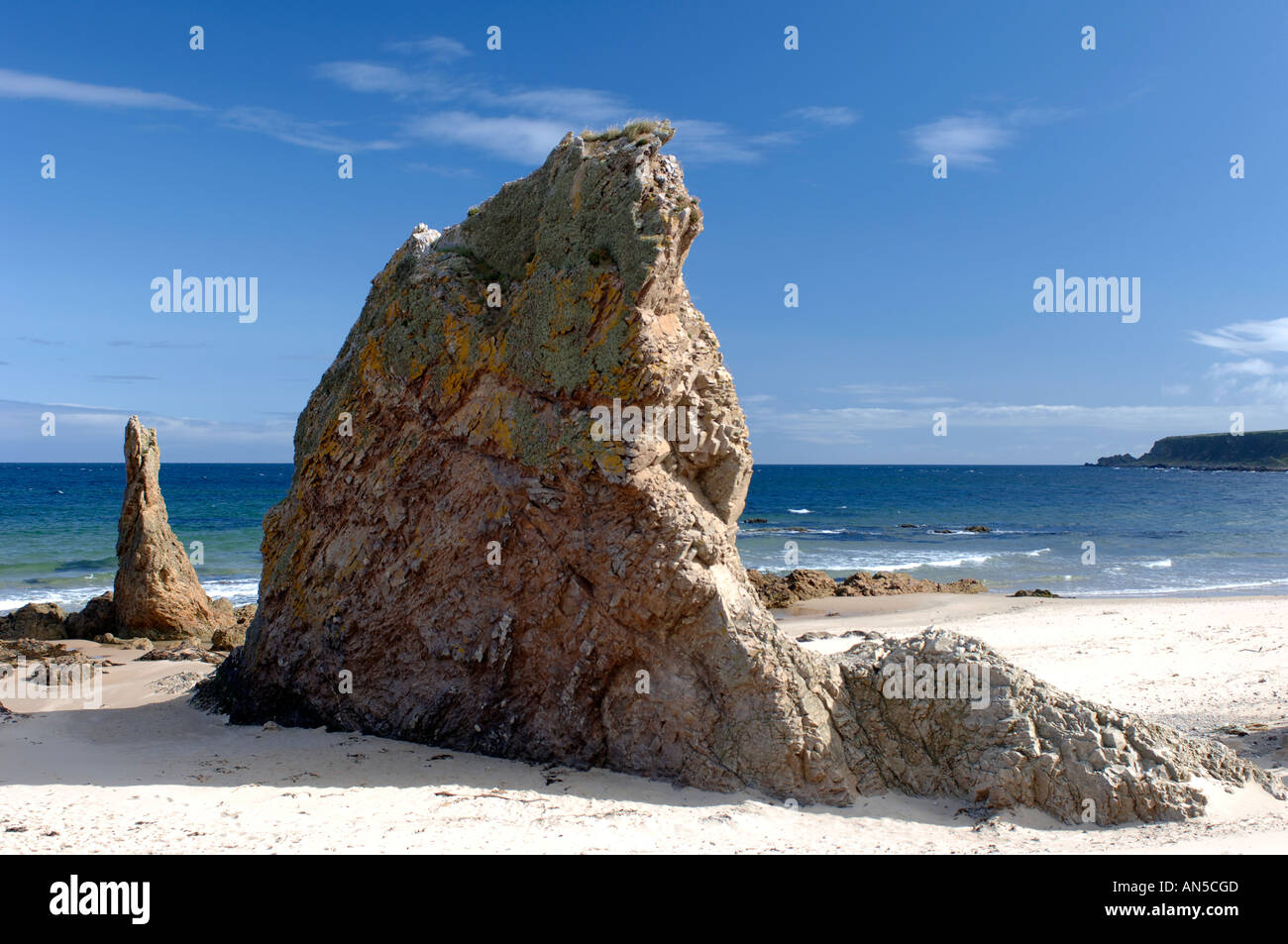The Three Kings, rock stacks on Cullen beach, Moray. Grampain Region. Scotland. XPL 3268-324

Image details
Contributor:
David Gowans / Alamy Stock PhotoImage ID:
AN5CGDFile size:
53.1 MB (1.9 MB Compressed download)Releases:
Model - no | Property - noDo I need a release?Dimensions:
5288 x 3512 px | 44.8 x 29.7 cm | 17.6 x 11.7 inches | 300dpiLocation:
Cullen Beach, Moray, Grampian Region. Scotland. United Kingdom.More information:
The Royal Burgh of Cullen (pop circa 1400) is both renowned for the beauty of its setting and rich history. The original village, Invercullen, was at the mouth of the Cullen burn, but the people moved inland to what is now known as Old Cullen about the year 1300, during the wars of independence against King Edward I of England. In 1327 King Robert the Bruce's queen, Elizabeth de burgh, died at Cullen. The prominent family of the time, the Oglivies, lived at Findlater castle, east of Cullen. In 1600, however, they built Cullen house close to the church and village and Findlater castle fell into ruin. In the 17th century, Cullen's Laird became Earl of Findlater and in the next century the estates passed to the earl of Seafield. Cullen house was extended more than once, and has now been converted into luxury homes. Fishing has been carried on at Cullen for at least five hundred years, and the picturesque huddle of the Seatown with its colourful painted cottages and twisting lanes dates in part from the 17th century. The small harbour, begun in 1817 and once busy with the herring fishing, is now mainly used by pleasure craft. The village specialised in the export of smoked haddock and had at one time three large curing houses. Perhaps the most striking feature of the town is the series of railway viaducts, one of the great achievements of nineteenth-century railway engineering, which divide the Seatown from the upper town. They were built in 1886 by the Great North of Scotland Railway because the countess of Seafield would not allow the line to cross the policies of Cullen house. The arches of the viaducts frame some of the best views of the town and its surroundings; the Seatown, the Cullen burn, the 19th century temple of Pomona - a garden teahouse in the shape of a classical temple and, most magnificent of all, Cullen bay with the isolated rock stacks known as the 'Three Kings'.